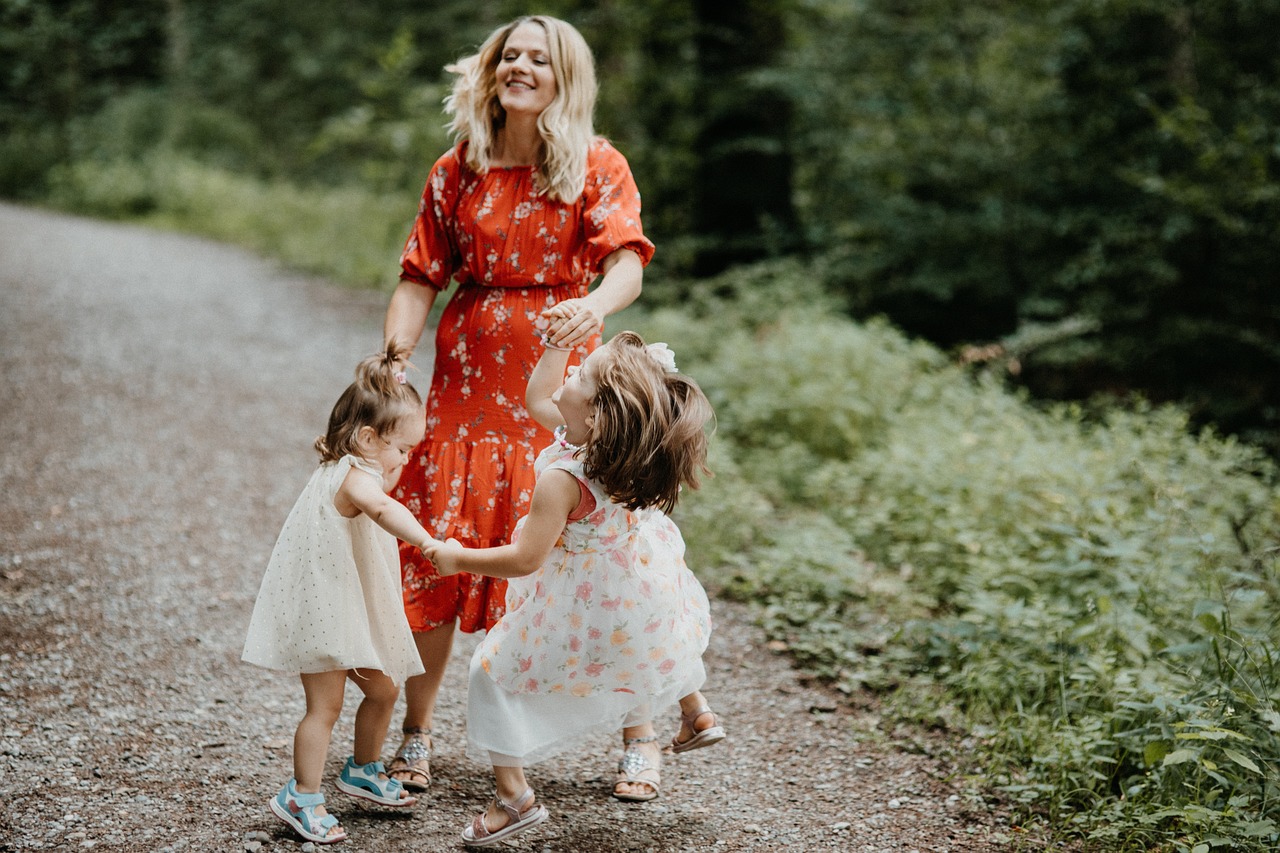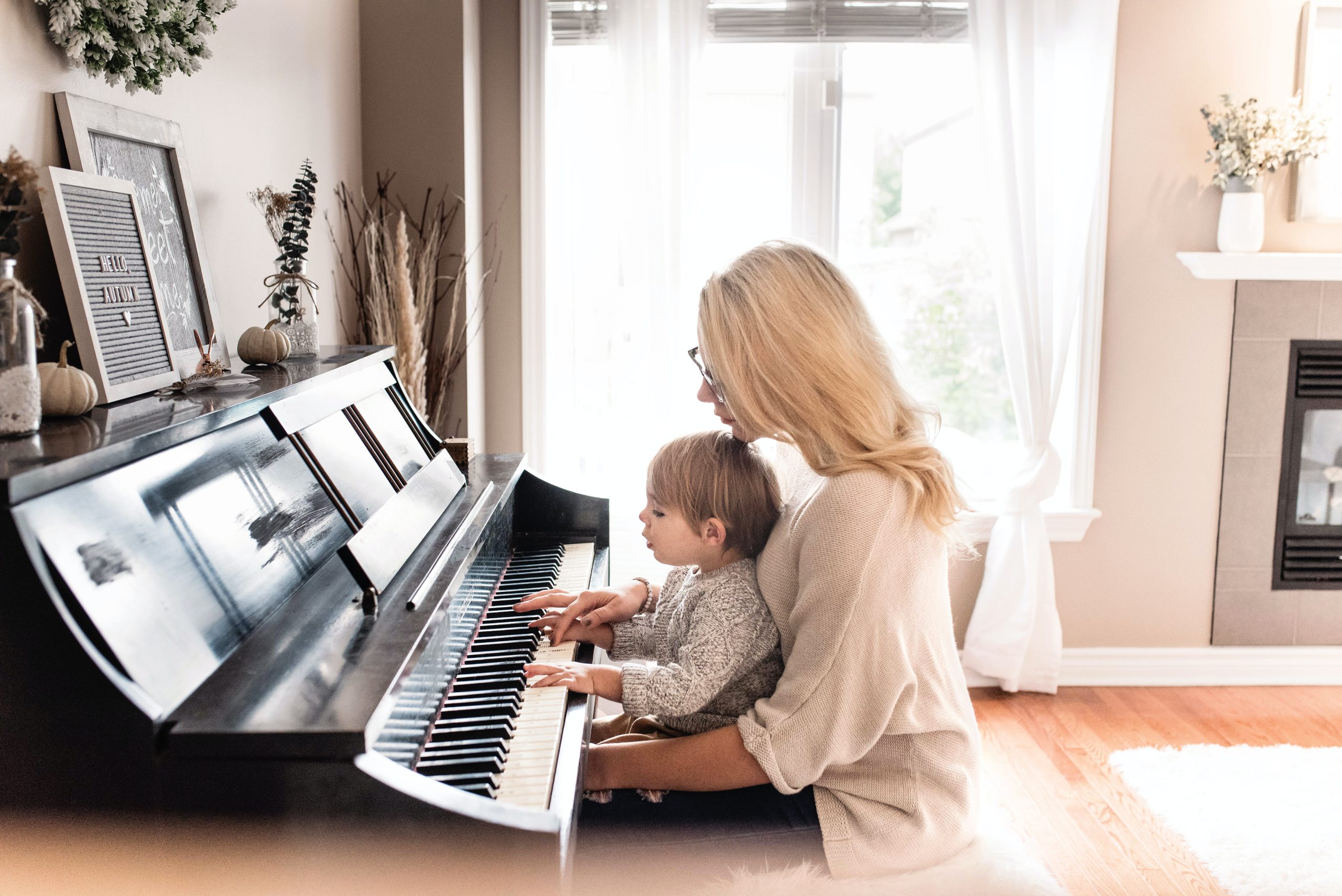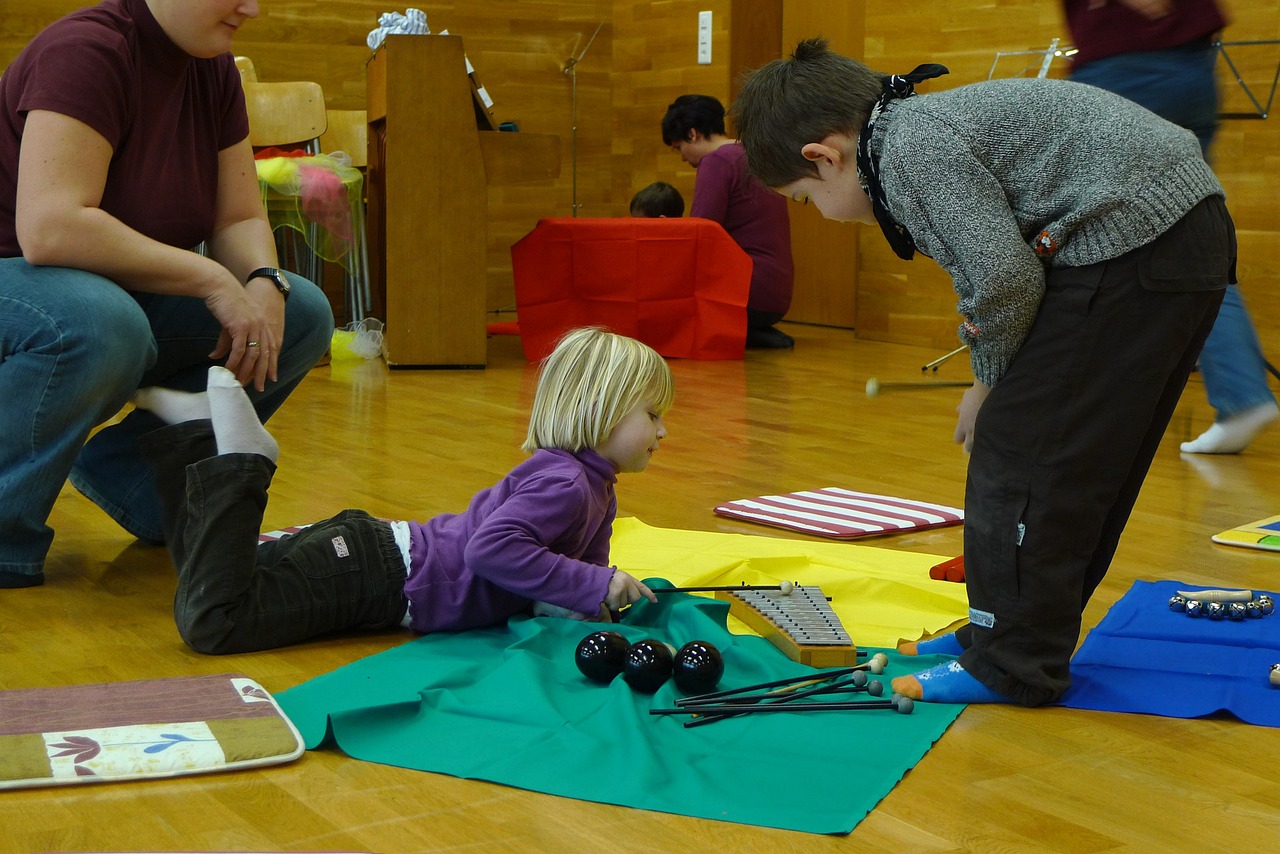Music lights up the human brain, activating more than ten different regions within it. An article from Johns Hopkins University described music as a “total brain workout.” Music education is proven to improve vocabulary, reading comprehension, memory, cooperation with others, and auditory functions in children. These are just a few of the reasons why music plays an important role in early education, including Montessori education.
Remarkably, Maria Montessori emphasized the role of Montessori songs in early childhood over 90 years ago. She said in 1931, “There should be music in the child’s environment, just as there does exist in the child’s environment spoken speech. In the social environment the child should be considered and music should be provided.” Music teaches language and rhythm and is a wonderful addition to Montessori classrooms and homes.
I have witnessed the power of music in my own home with my kids. Songs have the power to change their moods and can help them find play or focus. Songs can also teach; all three of my kids learned how to spell their names by singing jingles we created together. And after trying several ways to teach my eldest two kids letter sounds, I was shocked at how quickly they picked them up through song. Years later, if I start the phonics song we learned, “A is for…,” they can finish the lyrics.

What Are Montessori Songs?
Many different songs fit within the Montessori framework. There are songs that tell stories, practice rhyme, teach practical skills, and provide information about the world. These songs can also contribute to a rich, beautiful environment and be a means of self-expression.
 Some songs used in Montessori education are traditional and familiar to many, while others are less common. These songs earn their keep in the Montessori Method for music because they engage listening skills, language skills, emotions, and movement. They can also marry learning and fun, encouraging kids to use their imaginations, be silly, and get their wiggles out.
Some songs used in Montessori education are traditional and familiar to many, while others are less common. These songs earn their keep in the Montessori Method for music because they engage listening skills, language skills, emotions, and movement. They can also marry learning and fun, encouraging kids to use their imaginations, be silly, and get their wiggles out.
I encourage parents not to overthink the phrase “Montessori songs.” You may already be familiar with many songs supported by the Montessori framework. Some common songs supported by the Montessori approach are “If You’re Happy and You Know It” and “Eensy Weensy Spider.” “The Ants Go Marching” and “Five Little Ducks” are other trusted Montessori preschool songs. If you are already enjoying these types of songs with your children, you may not be aware of the important language and rhythm skills they can build.
Music Teaches Language
In a Montessori environment, songs teach children language. Through songs, children are introduced to new vocabulary words and their meanings. Additionally, kids can learn how strings of words come together to express a story. They can become familiar with the concept that stories have a beginning, middle, and end. Many songs feature repetition, where a phrase or word is sung over and over again. Repeating elements of songs can emphasize patterns in sounds and language. Repetition can also help kids practice saying or singing certain sounds.
Kids can also learn information through songs. The song “Five Little Ducks” teaches counting down from five, for example. Songs can also introduce concepts like seasons, patterns, emotions, holidays, traditions, and numbers.
Music Teaches Rhythm

Listening to music also plays a role in teaching rhythm, or the ability to recognize a regular, repetitive musical sound or beat. The development of rhythm is important in music, dancing, speaking, and communicating and is a skill that can be improved through practice. The Montessori By Mom Making Music Toolbox includes materials to teach kids many early music skills, including rhythm and music reading.
Montessori songs give kids the opportunity to move their bodies in time to a specific rhythm. In the song, “The Ants Go Marching,” kids can march or step to a regular, repetitive beat and practice keeping to a musical rhythm. Moving to a beat can help kids develop both fine and gross motor skills. This shows that music helps toddlers develop. Stopping your feet during “If You’re Happy and You Know It” uses large muscle groups while wiggling your fingers like rainfall in “Eensy Weensy Spider” uses small muscles in the hands and wrists. Rhythmic movement can also build coordination, strength, and balance.
Importantly, moving to the rhythm can also be an outlet for creative and emotional expression in music. Kids can use their imaginations to impersonate characters or events in a song. They can tune into emotions and feelings through music.
Montessori Songs for the Classroom and Home

Here are some songs that can work beautifully in the Montessori classroom and home environment.
- Ants Go Marching: This delightful song gives kids the chance to move their bodies by swinging their arms and lifting their knees to march. The lyrics also give kids exposure to numbers and rhyme.
- Five Little Ducks: This song has lots of repetition, rhyme, and opportunities for movement. Kids can use their fingers to count down from five.
- If You’re Happy and You Know It: This great movement song engages kids’ listening skills as they pay attention to which part of their bodies to move next.
- The Party Freeze Dance Song: This fun tune from The Kiboomers directs kids to freeze and then return to dancing or moving throughout the song.
- Down By the Bay: Raffi’s Down by the Bay is a silly song with rhyming, vocabulary, and repetition.
- We’re Going on a Bear Hunt: There are many fun variations of this song based on the book “We’re Going on a Bear Hunt” by Michael Rosen. The song takes kids on an imaginary adventure through several obstacles.
Look for Opportunities to Incorporate Music into Your Day
There are many ways to bring music into children’s lives. In my experience, one of the easiest ways is to listen in the car. If we’re on a longer drive than usual, silly songs can lift everyone’s moods. We also love to have informal “dance parties” in the evenings at our house. We’re often all together in the evening, and as a parent, I love lower-mess activities at this time of day. Dance parties don’t require dragging out a lot of supplies. It’s also fairly easy to engage children of different ages and stages with music. If you’re already enjoying music throughout your day, I hope that you are able to appreciate the benefits it can provide to children!
Kelly Marie is a former scientist and mother of three young kids. She enjoys writing about her experiences in parenting and regularly creates free printable resources for parents and teachers for her blog Hey Kelly Marie. She currently lives in Kentucky with her family.




0 Comments